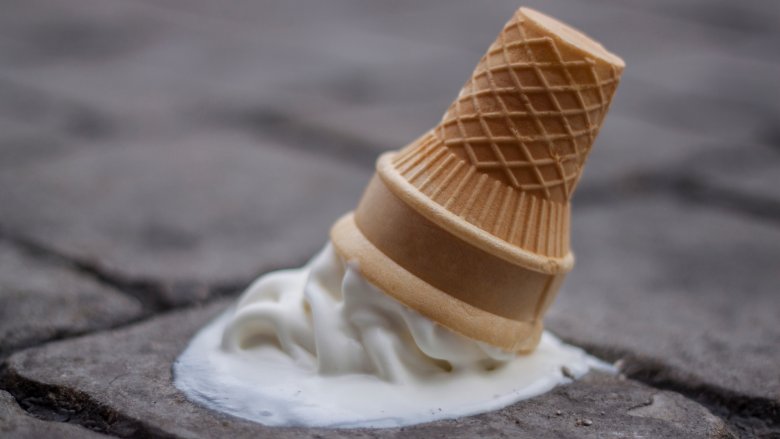Does The 5-Second Rule Really Work?
You drop some food on the floor, but you know that if you pick it back up again within five seconds, it's totally fine to eat. Right? Well, maybe not. If you're wondering if the five-second rule really works because you're hoping to keep eating your dropped nibbles, well, this might be some bad news for you.
The basic premise of the five-second rule is that if you grab your food off the floor before five seconds tick by on the clock, you can eat it and no harm will befall you. Perhaps people think bacteria on the floor needs a few seconds to get going to reach the food, so if you beat them in this imaginary race, it's A-OK.
However, researchers from Rutgers put it to the test and found that this rule is completely unfounded in scientific fact — although there are a few variables that can impact how much bacteria can cling to the food item in question, and how quickly it can transfer to the food's surface.
They tested four different types of surfaces (stainless steel, ceramic tile, wood, and carpet) with four different types of foods (watermelon, bread, bread and butter, and gummy candy), and introduced four different contact times (less than one second, five seconds, 30 seconds, and 300 seconds).
Basically, items with a lot of moisture, such as watermelon, pick up far more bacteria at a far quicker pace than items with less moisture, like gummy candy. Also, interestingly, carpet has the lowest transfer rate, while tile and stainless steel have the most.
The basic consensus is that it's just too risky to eat food that you've dropped on the floor, even though there are a ton of variables — including how damp your food is, what you're dropping it on, how quickly you pick it up, and what actual bacteria resides on the floor. The bottom line is that you just don't know if your gummy bear is just fine or you are about to put some E. coli into your mouth, so you should probably not take the risk.
In other words, forget about the five-second rule and throw your dropped food away just to be on the safe side.
